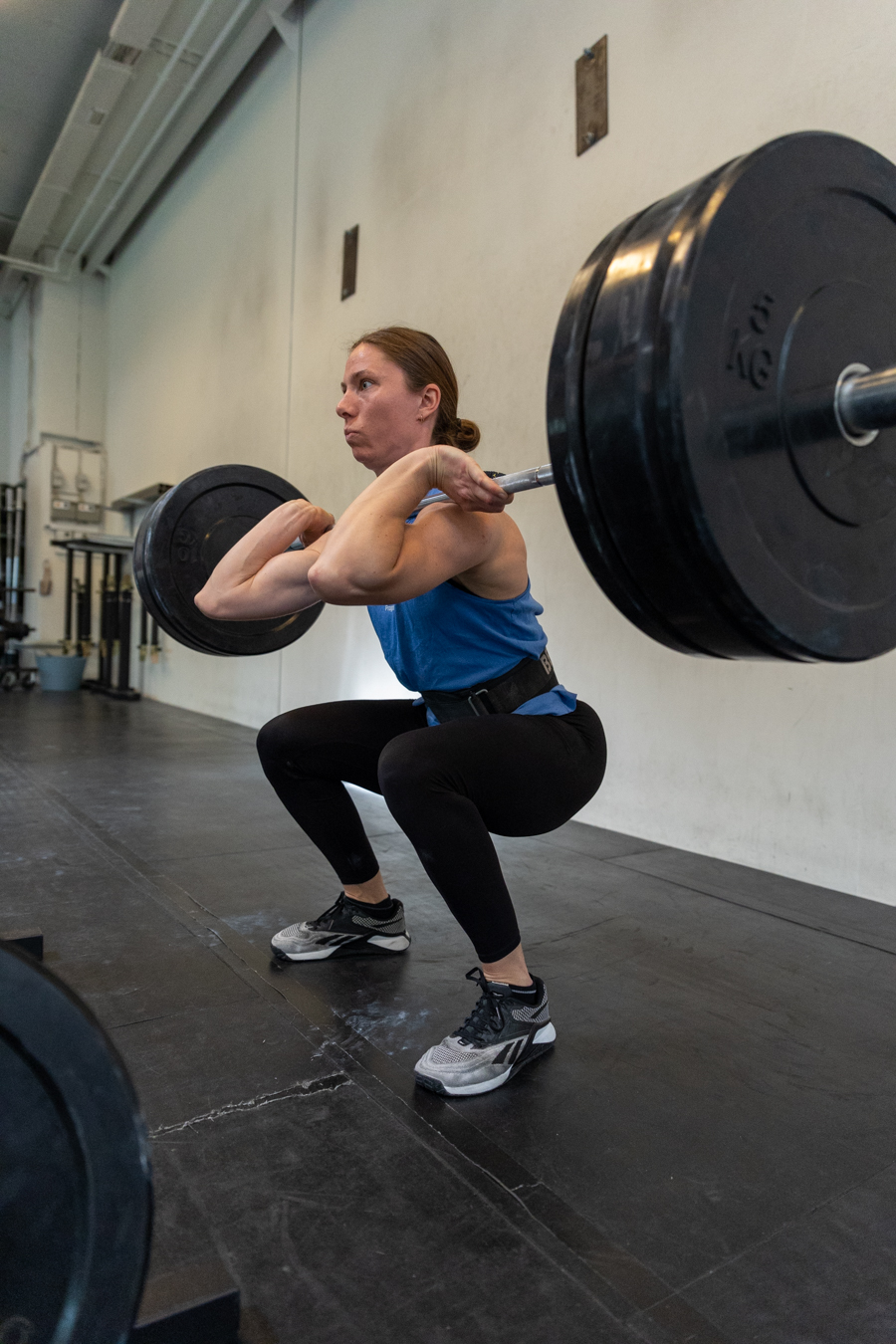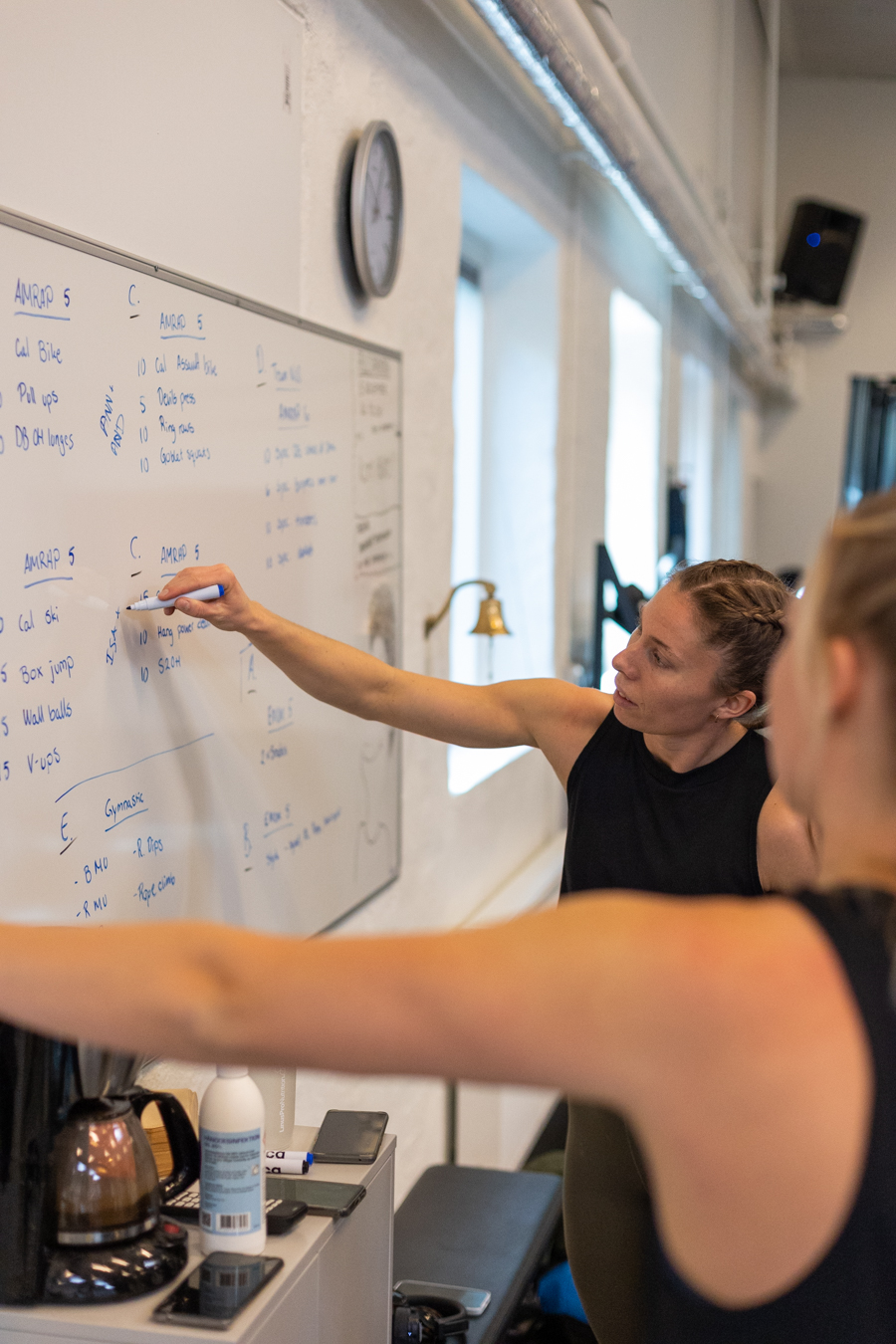Newest programs
Popular posts
Information
Who are we?
MuscleFit Program is a fitness plan created by experienced coaches with science and health backgrounds. It focuses on strength, weightlifting, gymnastics, and conditioning.
contact us

Welcome to the world of squats where the front squat to back squat ratio is more than just numbers on a barbell. Whether you're a seasoned CrossFitter or just starting your fitness journey, understanding this ratio can unlock new levels of strength and balance.
You might be wondering: why should you care about the front squat vs back squat weight conundrum? Well, friend, that's because each type of squat targets different muscle groups and offers unique benefits. The front squat gives your core a run for its money, while the back squat supercharges your posterior chain.
So, how do you determine the perfect back squat to front squat ratio? The answer isn't one-size-fits-all, and that's the fun part! Dive into our guide to learn how these ratios can elevate your fitness game and keep your workouts fresh and exciting.
Join us as we explore the ins and outs of squatting. Get ready to lift, learn, and maybe even laugh a little along the way. Let’s sweat it out and make gains together!

When it comes to CrossFit, knowing your front squat to back squat ratio can be a game-changer. Why, you ask? Because it’s the secret sauce to sculpting a well-rounded, powerful physique. Understanding the balance between the front squat vs back squat weight not only helps in improving your overall strength but also ensures you’re not leaving any muscle group behind.
Picture this: you’re in the middle of a grueling WOD (Workout of the Day) and feeling at the top of your game. That confidence comes from the perfect balance, thanks to your knowledge of the back squat to front squat ratio. With this insight, you can customize your training regimen to target specific areas, preventing muscle imbalances and reducing the risk of injury.
Moreover, knowing your squat ratios can guide you in setting realistic goals that are tailored to your personal fitness levels. It adds a layer of strategy to your workouts, making your CrossFit journey not just about lifting heavy, but lifting smart. Whether your aim is to boost your overall performance or simply have more fun with varied workouts, understanding these ratios opens the door to endless possibilities. So, next time you hit the gym, carry this knowledge with you and watch your progress soar!

Ever wondered whether your front squat to back squat ratio is on point? It's a common curiosity among fitness enthusiasts and CrossFit warriors alike. Typically, your back squat max is about 20% more than your front squat. This front squat vs back squat weight difference exists because the back squat allows you to engage your glutes and hamstrings more effectively, bearing a heavier load.
But hold on a second—don't just brush off the front squat! It's an excellent benchmark for assessing your core and quad strength. This nifty number gives you insights into how balanced your muscle development is. If your back squat to front squat ratio is out of whack, it might be time to adjust your training program.
Think of it like tuning a guitar; all strings need to be tight, but not too tight, to create harmony. Getting your ratios right doesn't just make you stronger; it makes your workouts more efficient and enjoyable. And who doesn't want that?
So, the next time you're in the box, keep these ratios in mind. Challenge yourself to balance them for a more comprehensive fitness experience. Remember, it’s not just about hitting numbers—it's about feeling unstoppable. Now go out there and squat like a pro!

So, you’re ready to dive into the nitty-gritty of calculating your perfect front squat to back squat ratio. Let’s break it down! Typically, athletes find that their front squat is about 70-85% of their back squat. This range can vary based on your unique strengths and weaknesses—and that’s okay! Finding your sweet spot requires a bit of trial and error.
Imagine tuning a guitar. You need to get each string just right for the perfect sound. The same goes for your front squat vs back squat weight. Start by testing your one-rep max for both lifts. Then, do some quick math: divide your front squat max by your back squat max, multiply by 100, and voila! You’ve got your baseline ratio.
If your ratio seems a bit off, no worries! It’s an opportunity to tweak your training. Maybe your back squat to front squat ratio shows that your quads could use some love. Or perhaps it’s a sign to strengthen your core for that rock-solid front squat form. Either way, knowledge is power—and in CrossFit, that’s how you level up.
Incorporating these insights into your routine fuels your progress. Whether you’re smashing PRs or enjoying the variety in your workouts, understanding these ratios is your roadmap to success. So gear up, keep pushing, and remember: it’s all about the journey, not just the destination!

Ready to fine-tune your front squat to back squat ratio? Let’s make your workouts both effective and thrilling! Here are some tips to boost that ratio, making you the talk of the CrossFit box.
Balance is key! Alternate your squats to target different muscle groups. If your front squat vs back squat weight is off, adjust your routine to focus on underdeveloped areas. Think of squats as the main dish with a side of glutes and quads.
A solid core elevates your front squats and reduces injury risk. Core exercises like planks and leg raises can make your back squat to front squat ratio sing in tune.
Correct form is a game-changer! Perfecting your technique in both squat types will make a noticeable difference. Think quality, not just quantity.
Keep a journal of your squat ratios. Tracking helps identify trends, areas for improvement, and sets a foundation for goal-setting.
Remember, CrossFit is a journey, not a sprint. Have fun while lifting, and don't shy away from experimenting with different variations to find what suits your front squat to back squat ratio best. Uncover your potential and create a workout symphony that’s uniquely yours!
How to Climb a Rope: Rope Climbing Tips for Crossfit Beginners
Reverse Plank Hold: The Ultimate Guide for CrossFit
How Many People Can Bench 225 in CrossFit?
What Is an EMOM? Understanding the EMOM Meaning in CrossFit
Understanding CrossFit and Back Injuries
CrossFit Hand Care: Keep Your Hands in Top Shape
Mastering CrossFit Bodyweight Workouts: Complete Exercise List and Tips